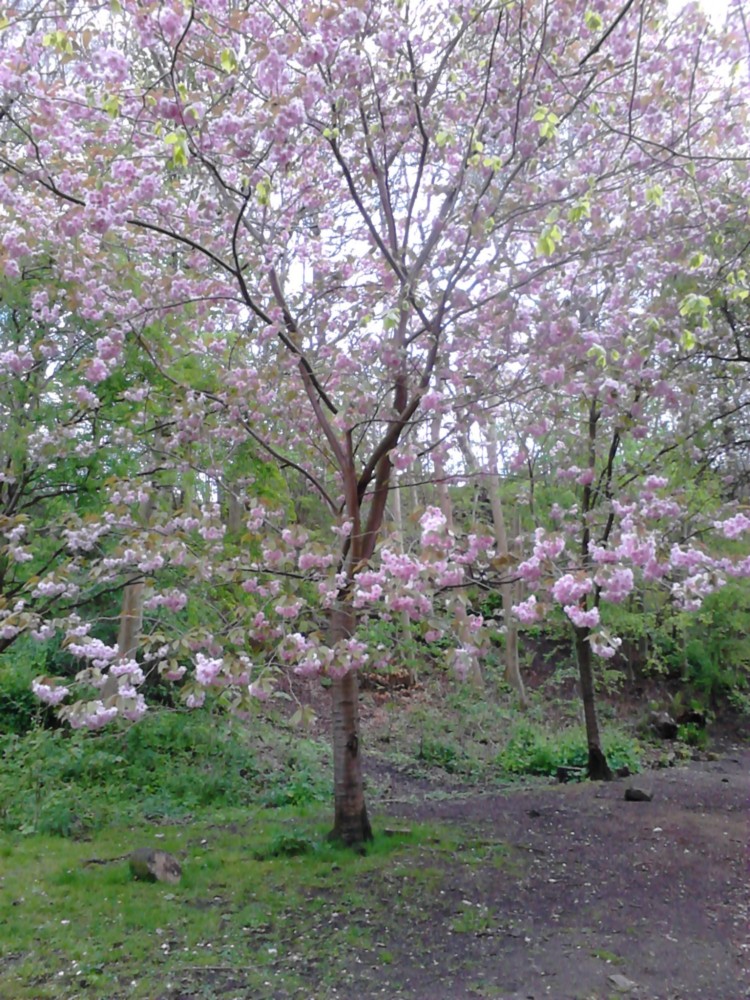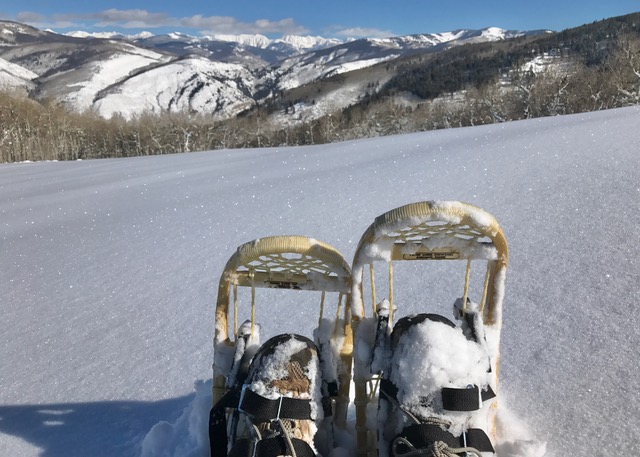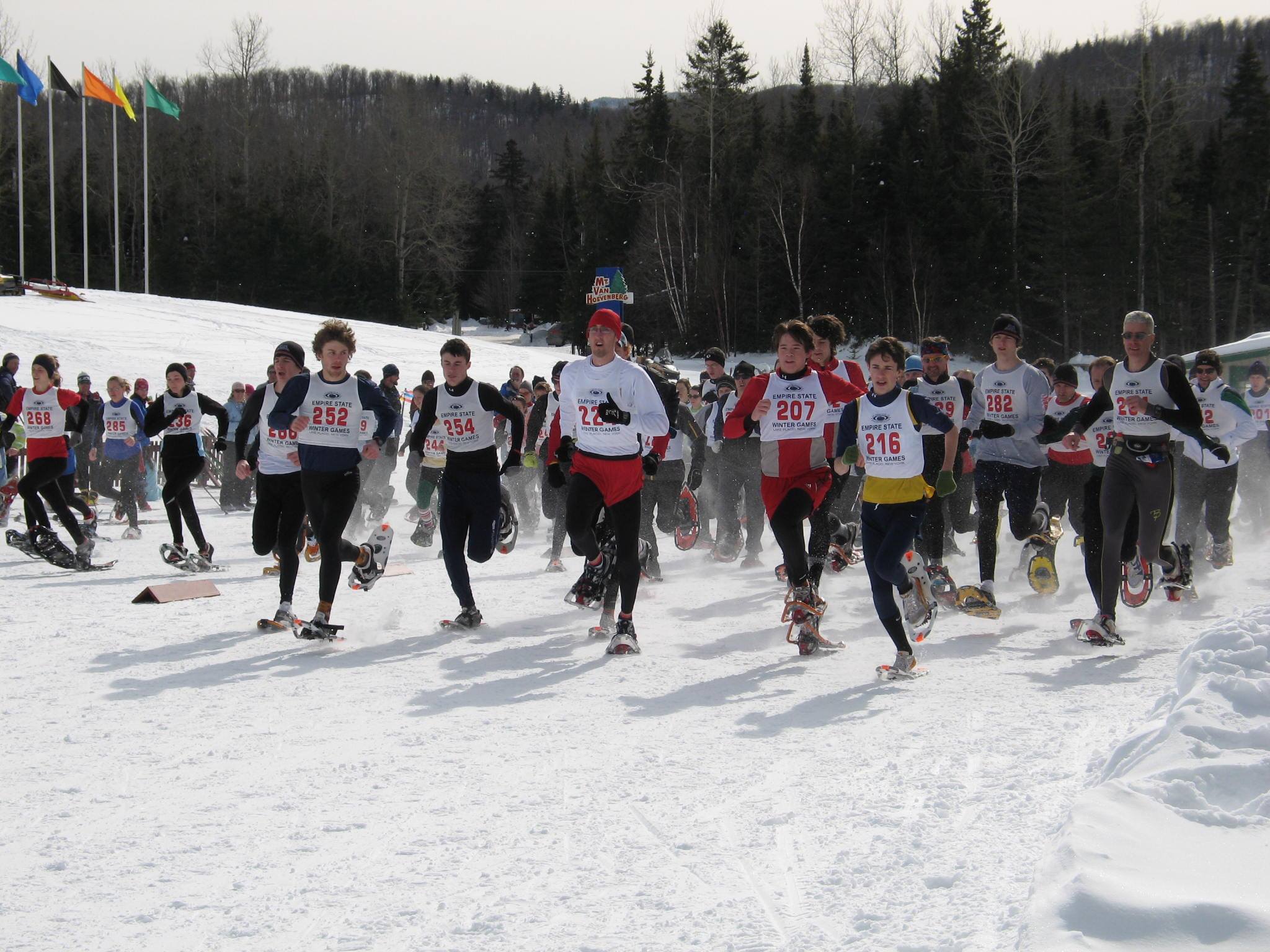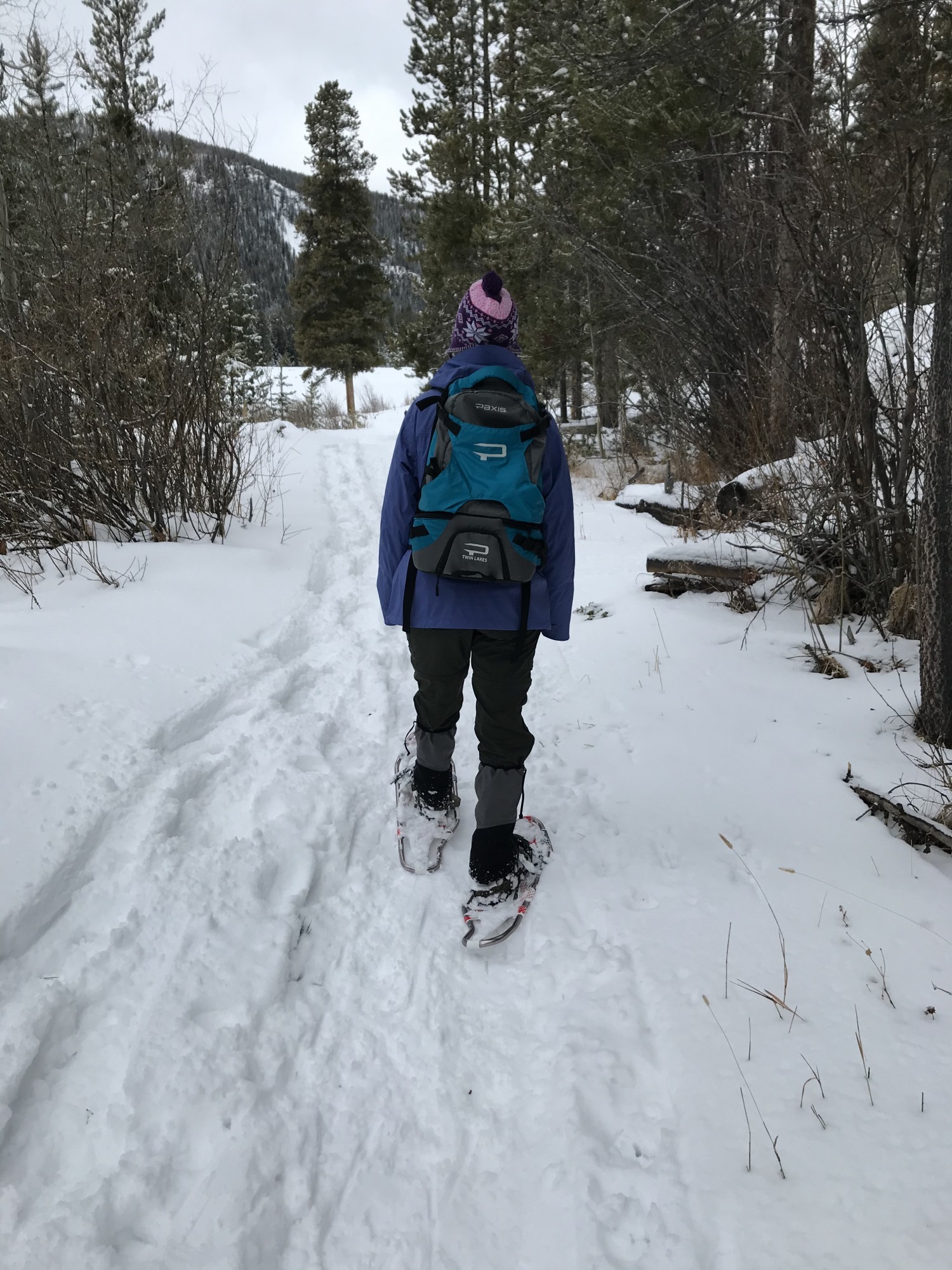Several of the men are wearing snowshoes, but there is one who waves them in the air instead. It’s a strange thing to do with a pair of snowshoes, but it seems to be getting the job done anyway. They are Eskimos and they are corralling scores of reindeer into a circle of crudely hewn fencing, a practice known in Alaska as a “round-up.”
When George Aden Ahgupuk was a boy in Shishmaref, a tiny village on the Bering Sea, these round-ups were etched into his memory. He’d later draw his memories onto this piece of reindeer hide, now sitting behind glass in the Hall of Native American Cultures at Yale’s Peabody Museum.
For snowshoers, this is an interesting nook of the museum, but it’s just a taste of what Yale actually holds. Considering that snowshoes are 6,000 years old, there sure must be a lot of them in the attics of the world. For the most important of these, museums of natural history seem willing to make space.
For instance, just a few feet away from Ahgupuk’s work, among the kayaks and harpoons that depict life in the arctic regions, is a pair of willow branch snowshoes. They came from Anuiti, Alaska sixty years ago when curator Cornelius Osgood did research there on the use and manufacturing of snowshoes. Between them is a four-inch birch wood snowshoe needle from the 1930’s that was used for webbing early snowshoes like this pair with babiche. The museum holds other artifacts directly related to snowshoes, including awls and smoked sealskin line, all preserved in the vaults of this extensive treasure chest.
So extensive, that an entire exhibit of snowshoes could be arranged. In storage, Yale holds another thirty-five pairs of early snowshoes, which, aside from Alaska, come from places like Canada, Japan, Yugoslavia and Austria. The designs are just as varied in size, too, with miniature model snowshoes as small as 5 ½ inches and hunting snowshoes up to 60 inches in length, which is double the length of today’s models. And while today’s snowshoes are manufactured from lightweight aluminum and plastics, these early pairs were crafted from such natural materials as wood, hide, twine, intestine, bone and plant matter. The variety of styles in the collection shows how the Indians who perfected the snowshoe did so not by coming up with only one perfect design, but a variety of designs specific for the different conditions they faced on the plains and in the mountains.
Despite these snowshoes being hidden all over the world, many of the museums at which they reside can be browsed online. For instance, details on Yale’s collection, including a few photos, can be accessed at http://www.peabody.yale.edu.
However, the McCord Museum at McGill University http://www.mccord-museum.qc.ca/en/ has some of the best online images relating to snowshoeing. With over sixty results from a “snowshoe” search, visitors to the site can browse not just photos of people in early snowshoes, but even horses!
One of the best online exhibits of actual snowshoes, however, originates at the University of Maine’s Hudson Museum and is titled “Snowshoes: A Gift From Gluskabe.” http://www.umaine.edu/hudsonmuseum/online.php Gluskabe is a reference to an Indian entity who protects humans in nature. Visitors to the site can view crisp photographs of Nineteenth Century snowshoes of the Maine Indians, various Franco-American designs, as well as other Northeastern examples. Each photograph gives details not only about the shoes themselves, but also about their creators and their intended use. For example, one pair from 1909 was a special order for Admiral Robert E. Perry, who on April 6 of that same year became the first man to reach the North Pole.
Snowshoeing is such an ancient activity that there will never be one roof under which all its history will fit. So with all these artifacts scattered out there, it’s nice to know that they are in the good hands of curators around the globe. The best part is that we don’t have to go too far to enjoy them.





